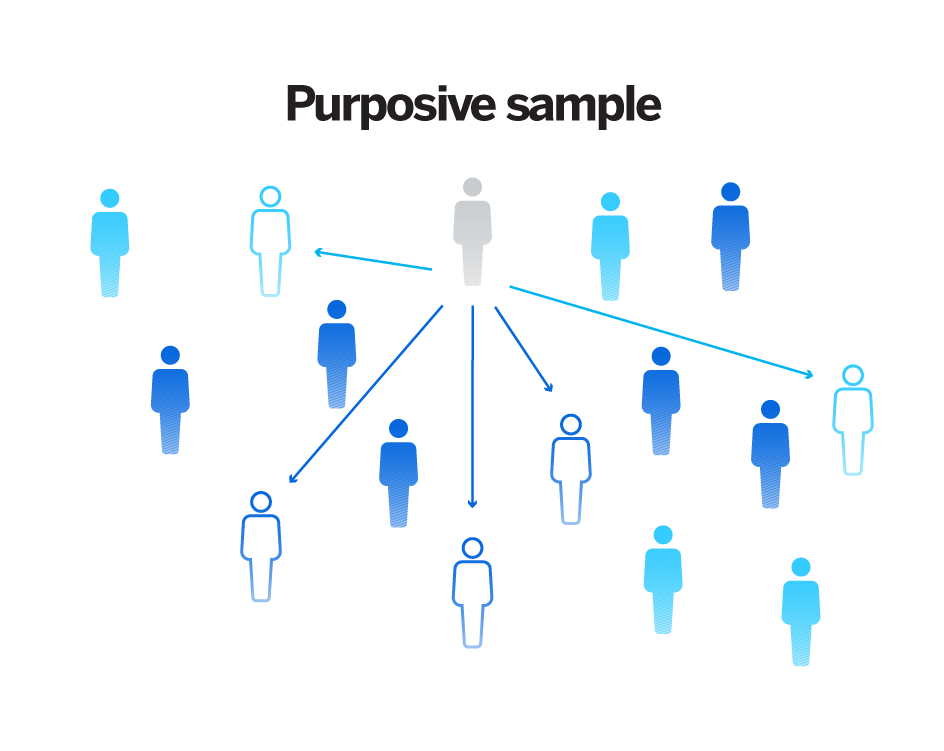
All about Purposive Sampling Method
Purposive sampling is a non-probability technique that can be used for both qualitative and quantitative research. Students who perform research employ this tool for effective study by studying a specific cultural domain. The main purpose of the researcher here is to assess his judgment while relying on the population members who are participants in the surveys. This is the reason why this sampling method is also known as subjective, selective, and judgmental sampling.
Things you need to remember
- Prior knowledge of the purpose of your study
- You can choose eligible participants for the survey
- You can conduct the survey online and then select a particular group of people that match the profile.
- Focus on those sampling techniques where the units are investigated based on the researcher’s judgment.
Purpose of Purposive Sampling
- Its main purpose is to focus on particular characteristics of a population.
- With the help of this method, the researcher gets to examine and discover the answer to his research question.
- The researcher here is given the opportunity to collect a lot of information and facts.
- It also allows the researcher to describe the impact their findings have on the population.
- Based on the type of purposive sampling technique, the purpose of the method varies.
Types of Purposive Sampling
Some of the sub-types of purposive sampling technique are-
Maximum variation sampling: Under this type, you need to collect a wide range of participants with different viewpoints so that you are able to study a particular phenomenon. It also helps you uncover common themes. It ranges from typical conditions to more rare or extreme ones. By condition, we mean various research units such as organizations, people, different sets of data, and cases. These research units exhibit a wide range of qualities, behaviors, incidents, situations, experiences, and attributes. The main motive here is to collect broader and deeper insight into a phenomenon by carefully analyzing all possible viewpoints and perspectives. With the help of this method, the researcher gets to identify the common themes which are quite evident across the sample.
Homogenous sampling: Here, you must choose a small homogenous group of units or subjects for evaluation and carefully analyze the research process. With the help of this sampling technique, the researcher gets to achieve a homogenous sample whose units share similar characteristics, including age, background, gender, and occupation.
Deviant or extreme case sampling: This kind of sampling focuses on exceptional cases that are rare by nature. Extreme case sampling helps students create a good impression on their teachers. It also provides significant insight into a particular phenomenon that can be used later as a guide. It tends to reflect the purest form of insight.
Critical case sampling: You can use exploratory qualitative research or any other limited source research. In order to identify major issues, the researcher must determine the dimensions that make a case critical. You can even use it for testing a hypothesis by selecting the case that permits logical deduction of the type. Thus we can say that it permits maximum application of information and logical generalization to other cases.
Typical case sampling: This helps you focus on the study of a phenomenon or trend that relates to typical members of the population. Under this type, the units of analysis are large. It also allows the researcher to describe the general process that occurs.
Total population sampling: This one is used to examine the entire population with specific characteristics such as similar knowledge skills, current pandemic situation due to COVID-19, or exposure to an event. The researcher here selects the entire population because the size of the population that has a particular set of traits that you are interested in is minimal.
Expert sampling: This type of sampling is used to obtain information from individuals that have particular expertise in a specific research area. It is majorly used when you need some kind of opinion or assessment of people with a high degree of knowledge. It is also considered to be a cornerstone of a research method.
So, these were some of the types of purposive sampling that students need to remember. Apart from this, if you ever need help regarding your academic papers or assignments, feel free to contact our online assignment writing services for professional help and guidance.




